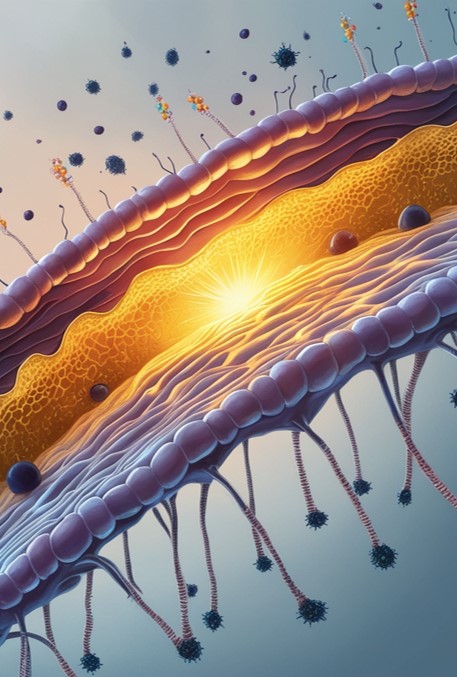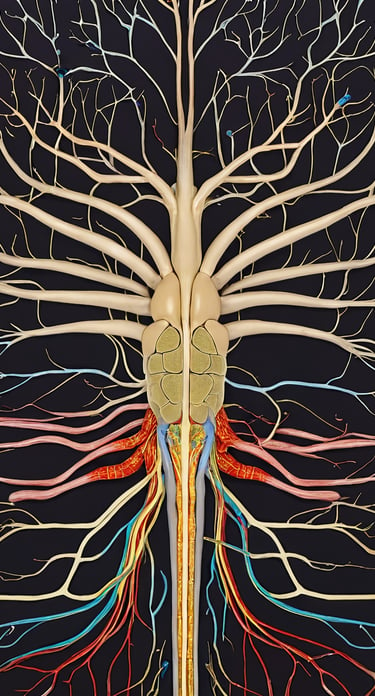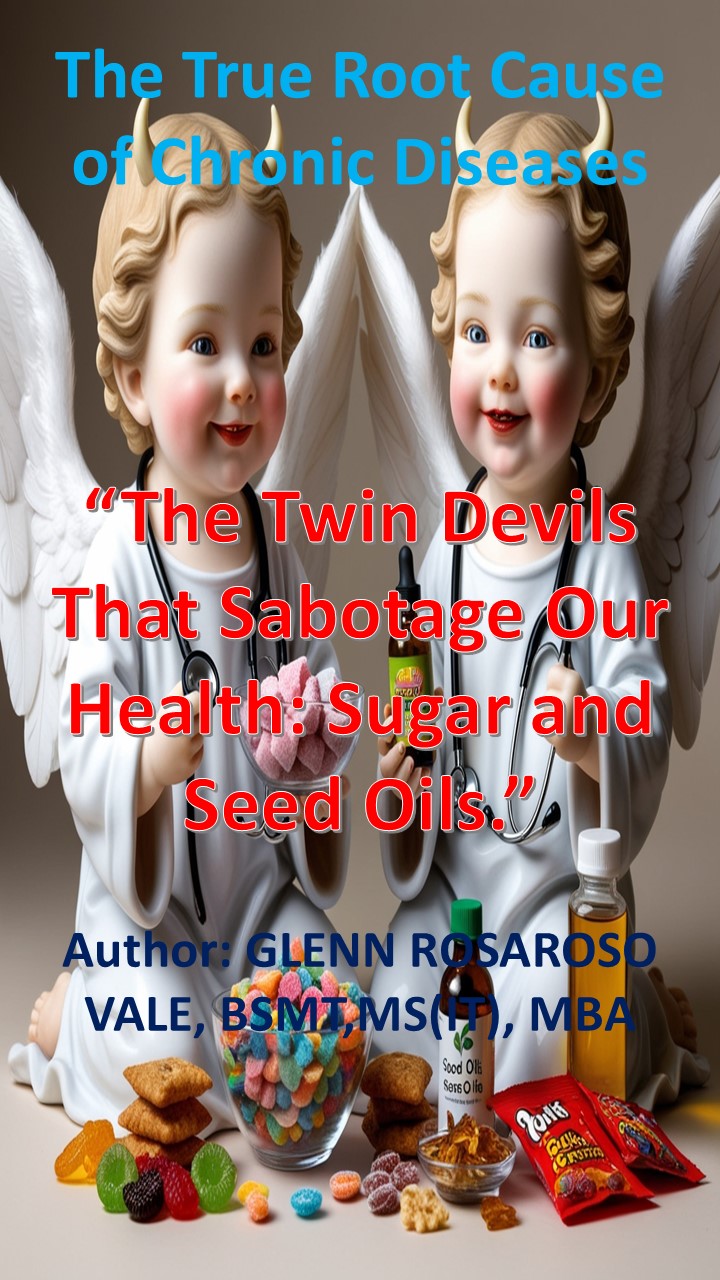"Uncover the truth behind the groundbreaking discovery of the causes of the world's biggest problems. 'The Root Causes' will change how you view the world!"
Understanding Parkinson's Disease: Causes, Symptoms, Pathogenesis, and Treatment
Parkinson's disease is a progressive neurodegenerative disorder that primarily affects movement, caused by the loss of dopamine-producing neurons in the brain. This results in common symptoms such as tremors, bradykinesia (slowness of movement), muscle rigidity, and postural instability. While the exact cause of Parkinson’s disease remains unknown, it is believed to involve a combination of genetic, environmental, and metabolic factors. Age is the most significant risk factor, with the disease typically affecting individuals over the age of 60. There is no cure for Parkinson’s disease, but treatments such as medication, deep brain stimulation (DBS), and physical therapy can help manage symptoms and improve quality of life. Ongoing research continues to explore new therapies and potential cures for this debilitating condition. If you or a loved one is experiencing symptoms, early diagnosis and intervention are essential for better management of Parkinson's disease.
DISEASES
Glenn Rosaroso Vale,BSMT, MS(IT), MBA
1/5/202511 min read


Understanding Parkinson's Disease: Causes, Symptoms, Pathogenesis, and Treatment
Parkinson’s disease (PD) is a chronic, progressive neurodegenerative disorder that primarily affects movement. While its exact cause remains unclear, research suggests a combination of genetic, environmental, and metabolic factors contribute to the onset and progression of the disease. In this comprehensive blog, we will explore the causes, pathogenesis, symptoms, and treatments of Parkinson’s disease, as well as the ongoing research aimed at finding a cure.
What is Parkinson’s Disease?
Parkinson’s disease affects the nervous system, specifically a part of the brain called the substantia nigra, which plays a key role in controlling movement. The disease occurs when the neurons in this region, responsible for producing dopamine, begin to deteriorate and die. Dopamine is essential for smooth and coordinated muscle movements. As dopamine levels drop, individuals begin to experience motor and non-motor symptoms that progressively worsen over time.
Parkinson’s disease is the second most common neurodegenerative disorder, affecting approximately 1% of people over the age of 60. Although it is most commonly diagnosed in older adults, it can also affect younger people in rare cases.
Causes of Parkinson’s Disease
While the exact cause of Parkinson’s disease is unknown, several factors contribute to its development:
1. Genetic Factors
Genetics play a significant role in the development of Parkinson’s disease. Some mutations in specific genes increase the likelihood of developing PD, though these genetic mutations account for only a small percentage of cases. Notable genes associated with Parkinson’s disease include:
SNCA: A gene that codes for alpha-synuclein, a protein that can form toxic aggregates (Lewy bodies) in the brain.
LRRK2: A gene that has been linked to both familial and sporadic cases of Parkinson’s.
PARK2: Mutations in this gene are associated with early-onset Parkinson's disease.
While familial forms of Parkinson’s disease are rare, research into genetic mutations has provided valuable insights into the mechanisms that drive the disease.
2. Environmental Factors
Environmental exposures are thought to contribute to the risk of developing Parkinson’s disease. Several factors include:
Pesticides and herbicides: Exposure to these chemicals has been linked to an increased risk of developing PD.
Rural living: People living in rural areas, where pesticide use may be higher, are at greater risk.
Heavy metals: Long-term exposure to certain metals, such as manganese, has been linked to neurological damage.
Head trauma: Repeated concussions and traumatic brain injury have been suggested as risk factors.
3. Age and Gender
The risk of developing Parkinson’s disease increases with age, and men are more likely to develop the disease than women. However, age remains the most significant risk factor, with most people diagnosed after the age of 60.
4. Metabolic Factors
Metabolic factors, such as mitochondrial dysfunction, oxidative stress, and impaired glucose metabolism, can also contribute to Parkinson’s disease. The brain’s inability to efficiently process energy and maintain cellular health can lead to the degeneration of neurons responsible for producing dopamine.
Pathogenesis: How Parkinson’s Disease Develops
The underlying cause of Parkinson’s disease is the degeneration of dopaminergic neurons in the substantia nigra, part of the brain that controls motor function. These neurons produce dopamine, which helps regulate smooth and coordinated muscle movements. As the dopamine-producing neurons die, the brain struggles to coordinate movement, leading to the hallmark symptoms of Parkinson’s disease.
Key Pathological Features:
Lewy Bodies: Abnormal protein clumps made up of alpha-synuclein accumulate within neurons, forming structures known as Lewy bodies. These clumps disrupt normal cell function and may lead to neuronal death.
Mitochondrial Dysfunction: Mitochondria, the energy-producing structures in cells, become less effective in Parkinson’s disease. The malfunctioning mitochondria cause oxidative stress, leading to cellular damage and the death of dopaminergic neurons.
Impaired Dopamine Production: As dopamine-producing neurons die, the brain’s ability to regulate motor function declines. This lack of dopamine leads to the motor symptoms characteristic of Parkinson’s disease.
Spread of Disease:
The disease process does not remain confined to the substantia nigra. As the disease progresses, the pathological changes spread to other regions of the brain, including areas involved in cognition, emotion, and autonomic functions. This results in the worsening of both motor and non-motor symptoms as the disease advances.
Symptoms of Parkinson’s Disease
Parkinson’s disease symptoms develop gradually and can vary from person to person. They are typically divided into two categories: motor symptoms and non-motor symptoms.
Motor Symptoms:
Resting Tremor: Often the first noticeable symptom, resting tremors are rhythmic shaking, typically in the hands or fingers when they are at rest.
Bradykinesia: Bradykinesia refers to the slowness of movement. People with Parkinson’s disease find it difficult to initiate or complete voluntary movements, which can make tasks like walking or dressing challenging.
Muscle Rigidity: Muscle stiffness or rigidity is common and can cause pain and reduce flexibility and range of motion.
Postural Instability: Individuals may have difficulty maintaining balance, leading to frequent falls.
Shuffling Gait: A characteristic shuffling walk with reduced arm swing is common in Parkinson’s disease.
Freezing of Gait: This is when an individual feels as if their feet are stuck to the ground, making it difficult to take steps.
Non-Motor Symptoms:
Cognitive Impairment and Dementia: As Parkinson’s progresses, cognitive decline may occur, leading to difficulties with memory, attention, and problem-solving.
Mood Disorders: Depression, anxiety, and apathy are common, affecting the overall quality of life.
Sleep Disturbances: People with Parkinson’s often experience poor sleep, insomnia, or REM sleep behavior disorder.
Autonomic Symptoms: These include issues with blood pressure regulation, constipation, urinary incontinence, and excessive sweating.
Pain and Sensory Issues: Chronic pain and a loss of the sense of smell (anosmia) can be early indicators of Parkinson's.
Treatment for Parkinson’s Disease
Currently, there is no cure for Parkinson’s disease, but several treatments can help manage symptoms and improve the quality of life.
1. Medications:
Levodopa: The most commonly prescribed medication, levodopa is converted to dopamine in the brain to alleviate motor symptoms.
Dopamine Agonists: These drugs, like pramipexole and ropinirole, mimic dopamine and stimulate its receptors in the brain.
MAO-B Inhibitors: These drugs, such as rasagiline, help prevent the breakdown of dopamine.
COMT Inhibitors: These drugs extend the effectiveness of levodopa.
Anticholinergics: Medications like trihexyphenidyl help control tremors.
2. Surgical Treatments:
Deep Brain Stimulation (DBS): Involves implanting a device that sends electrical impulses to specific brain regions, helping to regulate abnormal brain activity and improve motor symptoms.
Pallidotomy and Thalamotomy: These procedures involve destroying small areas of the brain involved in motor control to reduce symptoms.
3. Physical and Occupational Therapy:
Regular exercise, physical therapy, and occupational therapy can help maintain mobility, flexibility, and function.
Speech therapy may be helpful for managing voice and swallowing problems.
4. Experimental Treatments:
Gene therapy and stem cell therapy are areas of active research, with hopes of replacing damaged neurons or halting disease progression.
Neuroprotective treatments are being developed to slow the degeneration of neurons in the brain.
Conclusion: The Future of Parkinson’s Disease Research
Although there is no cure for Parkinson’s disease yet, advances in treatment options and ongoing research into the genetic, environmental, and metabolic factors involved in the disease offer hope for better management and potential therapies in the future.
Early diagnosis, personalized treatment plans, and a combination of medication, surgery, and therapy can help manage symptoms and improve the quality of life for those affected by Parkinson’s disease. With continued research into the mechanisms of the disease and the development of novel therapies, we may one day have the tools to halt or even reverse the progression of Parkinson’s disease.

How to reverse type 2 diabetes, lose weight, prevent chronic infection such as high blood pressure, heart attack including cancer presentation


This presentation is for you if
§Diabetic or prediabetic
§High blood pressure
§Any Insulin Resistance Complications
§CVD
§Alzheimer’s
§Cancer
§For young healthy individual who cares to preserve a good quality of life 10, 20, 30 years from now


2. Disclaimer
•Glenn Rosaroso Vale is not a doctor, but I have worked in the medical field for over 35 years in the laboratory. The information shared in this webinar is for informational purposes only and should not be taken as professional medical advice or recommendations. Please consult your healthcare provider before making any changes to your lifestyle or medical regimen based on this information."
•"The presenter and RootCausePrevention.com take no responsibility for any actions you may take based on the content presented in this webinar or the website. The information provided is meant to educate and inspire, not to diagnose, treat, or cure any medical conditions. Please always seek the advice of your physician or healthcare provider before acting on any information presented here."


Empower Yourself to Lead The Right Path To Reversal


3. Meet The presenter
Welcome You All in This Presentation
·My name is Glenn Rosaroso Vale, BSMT( MS(IT), MBA
·I have been in the medical field for more than 35 years
·Personal health challenges passionately motivate me to share with the world
·The importance of reversing Type 2 diabetes and preventing chronic diseases like high blood pressure, heart attacks, and cancer is crucial for having a good quality of life in the future.


4. What is Type 2 Diabetes? A Progressive Disease
That can end up in an ESRD
Many Chronic Complications
It progresses with the traditional medication and it worsens over time without prorper intervention.
This can be reverse through natural way
Diabetes starts with cell membrane depolarization
Preventing cell depolarization is our first defense through natural way
Then tightly regulate the ions causing to trigger different enzymatic reactions that activate different down stream pathological pathways
For example: An enzyme thromboxane synthase is upregulated in elevation of this ions producing a clot in myocardial infarction. Other enzymes are also upregulated in an elevation of these ions producing prostaglandin (PGH2), leukotienes, and other inflammatory cytokines molecules from omega 6 consumption
We must tightly regulate these ions in a natural way
LIPID BILAYER
CELL MEMBRANE
5. Traditional Medications: Building a Cycle of Progression
The cycle that medications create: symptom management but not disease reversal. For example, treating the sugar, treating insulin, and treating insulin resistance. All of this addresses the symptoms, not the root cause.
These are all like a temporary band-aid or patches on your wound
The long-term effects and dependency on these medications are chronic diseases such as high blood pressure, worsening type 2 diabetes, heart attack, Alzheimer’s, and even cancer.
Diabetes will never reverse, it will worsen
By empowering you with the knowledge, you cab decide the right path to reversal
6. The Yo-Yo Effect of Traditional Approaches
Conventional weight loss methods and diets lead to temporary results, followed by inevitable weight regain.
This creates a cycle of frustration and failure.


7. Why Current Diets Won’t Work
Popular diets (e.g., low-fat, low-carb, fad diets) don't address the root cause of Type 2 diabetes and chronic diseases.
These diets lead to temporary fixes but don't offer sustainable results.
It does not fix the polyol pathway. This is the pathway that starts the disease progression. Managing this pathway will solve the problem


8. The Root Cause: Why We Need a New Approach
The core issues that drive Type 2 diabetes and chronic diseases (Not Sugar, Not insulin resistance, not inflammation not , nutrient deficiencies, etc.).
Simply addressing symptoms isn’t enough for long-term health
We must address the real root cause of the disease. What initiated the downward pathological reactions is our main target to stop the progression
Regulation of these simple positively charged ions which is the root cause that triggers a series of enzymatic reactions that lead to destructions of the cells
Regulation of these ions is the holy grail of almost all the disease progression processes
.All factors that cause to increase these particular ions must be avoided



9. Breaking the Cycle: A Holistic, Sustainable Approach
Presenting a more effective solution that addresses the root causes rather than just masking symptoms.
Our Strategy are tightly regulating these simple ions as the real root cause of all
First, we try to avoid the initial cell membrane depolarization of the lipid bilayer causing an increase of these ions responsible for the next succeeding pathological reactions
Second, we regulate these ions tightly avoiding wide fluctuations
Third, we try to prevent gene mutation caused by elevation of these ions
We can stop the progression of the diseases
Do not expect a result if you do not follow our strategy. It takes disciplined The importance of nutrition, lifestyle changes, and mindset in reversing Type 2 diabetes and preventing chronic diseases are crucial for the success.
10. Why Your Current Strategy Isn’t Enough
The drawbacks of the traditional approaches and why they fail to provide lasting result are they are addressing the symptoms not the root cause of the disease
Without addressing the underlying causes, Type 2 diabetes will continue to worsen
11. How This Approach Helps You Lose Weight & Prevent Chronic Diseases
·The new method will help with weight loss, lowering blood pressure, reducing the risk of heart disease, and preventing cancer through natural way by changing lifestyle
Marites albano
I am a cancer patient stage ½ . It’s now metastasize in my lungs. I want to live longer
I glad I was able to talk to Glenn Vale for my diet plan
In conjunction with my treatment and diet plan. I think I have the chance to survive, I feel good so far and I will continue my diet plan
Thank you Glenn Vale


testimony
Aimee P. Panisal
I used to be big. I decided to follow Glenn’s diet plan and the book The Twin Devils That Sabotage Our Health, which teaches me what to eat and what not to eat. I lost 60 lbs and feel great. I do not have any chronic diseases, and I thank God for that.


testimony
RhenRen Yap
I used to be big-built, and I would eat whatever I wanted and feel great, until I developed obstructive jaundice. Now, I have decided to follow the advice in Glenn Vale's book The Twin Devils That Sabotage Our Health, and it has made a big difference.


testimony
ShIEla May martinez
I am young and feel healthy, but I am surrounded by family members with diabetes. My sister has PCOS. I want to prevent all those chronic diseases because they run in the family. I decided to follow Glenn Vale’s book The Twin Devils That Sabotage Our Health. I still feel great and am trying to maintain my weight.


testimony
12. Introducing My Book: The Twin Devils That Sabotage Our Health
The book, emphasizing how it outlines the step-by-step approach to health and wellness.
It’s a comprehensive guide for those serious about making lasting health changes.
This book will guide you how to reverse your diabetes through natural way
This can help you regulate and reveal that ions causing the trigger of initial pathologic downstream reactions
Act now, Do not wait. The disease is progressive
Maybe I am like you before, I said I feel fine but deep inside my body is slowly dying and it was too late I end-up ESRD. I don't want to happen to all of you. That is why I am sharing my experience
Get the Book Today & Take Action
Buy now—diabetes is a progressive condition. You might feel fine today, but over time, symptoms can worsen, and by then, it could be too late. Don't wait until it's too late—take action now to avoid potentially severe consequences, like the need for dialysis.
Thank
you FOR WATCHING THE presentation AND CLICK THE LINK TO PURCHASE THE BOOK
Glenn Rosaroso Vale, BSMT, MS(IT), MBA
903-268-6664
Health
Understanding illness to empower your well-being journey.
Wellness
Knowledge
info@rootcauseprevention.com
903-268-6664
© 2024. All rights reserved.
grfv@sbcgloal.net

